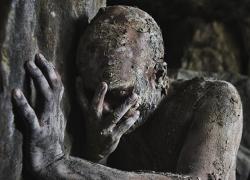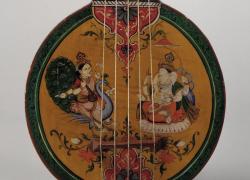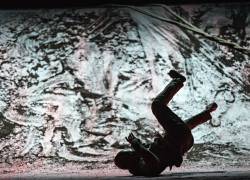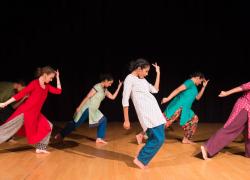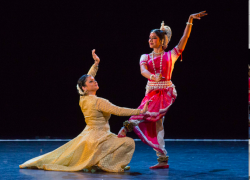Agathi
Agathi
10th June 2018
Bhavan Centre
Reviewed by Annapoorna Kuppuswamy
On a day when a refugee ship with hundreds of people was refused permission to dock, watching Agathi was a sobering reminder of the tribulations of the many who make this perilous journey. Agathi – a 90-minute dance production by the Singapore based company, Apsaras arts, directed by Aravinth Kumarasamy – was aimed at showcasing the plight of those displaced by war and natural calamities, using the bharatanatyam idiom.
Interweaving popular numbers by well-known Tamil poets with classical Carnatic sequences and rhythms, the three-act production started with exploring the joys of living in one’s own homeland. The scene quickly changes when calamity strikes, forcing people to flee. The intense and elaborate portrayal of a desperate boat journey through tumultuous seas did leave an impression on the audience. The final act showed the struggles involved in integrating into a new society. The whole production was held together by a narrator, and using a line from UNHCR book of refugee children’s poems as a refrain was an interesting idea. The production team must be commended for carefully choosing songs by Kavimani Desiga Vinayagam Pillai, Kaviarasu Kannadasan Bharathidasan and Maha Kavi Subramania Bharathiyar, written for a different purpose, and successfully integrating them into the current theme. Six dancers clothed in gender-neutral green and brown outfits wove in and out of the stage, re-creating myriad landscapes, whilst simultaneous translation of the lyrics flashed on a screen placed in front of the stage. Although sections of the production were well choreographed and beautifully presented, the repetition of messages, once by the narrator, words on the screen and the lyrics of the song left the viewer thinking, I get it now, please can you move on! Given the depth of issues faced by refugees, I felt the production was superfluous. Or, is it that London is saturated with such excellent issue-based productions that this failed to meet the standards?
The Q & A after the performance gave an opportunity to hear about the production process and the trigger for the concept. Having experienced displacement himself, Aravinth spoke about how personal the project was to him. Also, providing young dancers with a theme that they can relate to, provided the much needed connection with the present for an art form that some erroneously consider outdated. It was intriguing that Aravind decided to highlight Agathi as a production that provided scope for ensemble satvika abhinaya (emotive facial expressions). Do not all Indian classical theatrical productions/ dance dramas rely on ensemble satvika abhinaya?
Agathi certainly succeeded in highlighting the need to think about the refugee situation from a different perspective; however, given that it is a rather contentious issue, they could have taken this opportunity to delve deeper into some core problems. (A recent example of dance which dealt brilliantly with issues in depth was Amina Khayyam's A Thousand Faces.) Trying to do justice to both the issue at hand and experimenting with the scope of the art form was a tough ask and possibly where Agathi fell short.



















